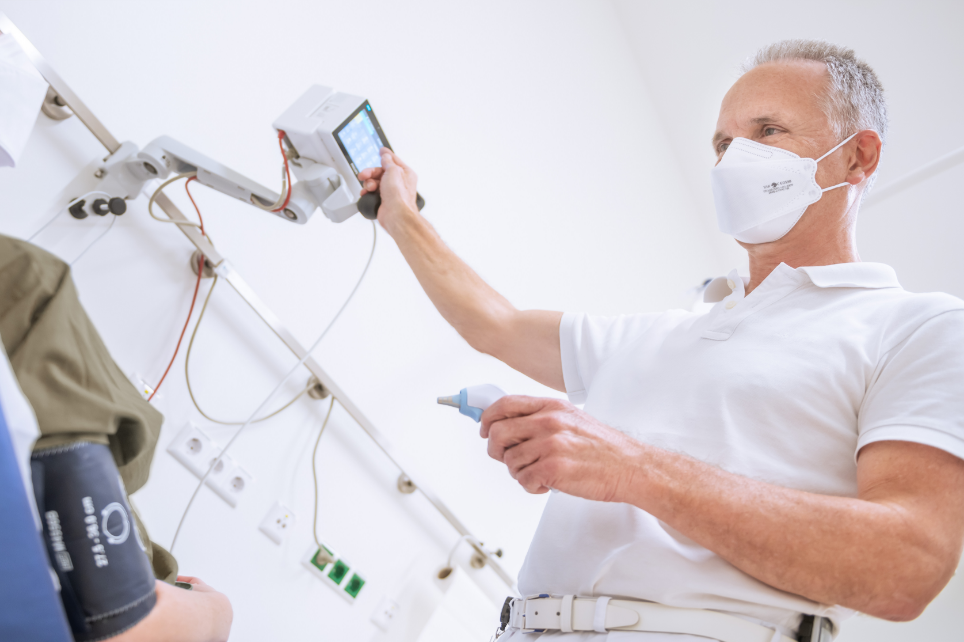
An ambulance drives up to the glass doors leading to the emergency room. On board is the emergency patient Sabine Schäfer. Even before she has even entered the hospital, I know that the 57-year-old has been suffering from acute, severe abdominal pain for an hour. The information from the report that the rescue service sent me via our NIDA IT system also allows me to register the patient prior to her arrival. Thus, we gain time, the most important resource in the emergency room. The rescue service brings Ms. Schäfer to the so-called triage point. Here I must decide how bad the patient’s situation is and how urgently she must be treated. Incoming patients must be prioritized in the emergency room so that persons with critical conditions do not have to wait.
Professional Help at High Speed - Medical Intervention Car Since 2019 the Medical Intervention Car (MIC) has belonged to the UKDH fleet of emergency vehicles. To date, MIC is a unique concept for the care of severely ill patients on the street in Germany. On board the MICs one finds not only an experienced emergency medical technician but also special equipment such as units of stored blood, an extracorporeal membrane and coagulation products. The MIC thus allows lifesaving measures to be taken on site which would not yet be possible for a regular ambulance service.
The "Medical Intervention Car (MIC)" is an innovative and so far unique concept in Germany to improve out-of-hospital emergency care. Learn more in the video.

I can see that the patient is suffering by looking at her face: She is pale, her features are distorted by pain, strands of hair are dripping wet on her forehead due to perspiration. “Hello Ms. Schäfer, my name is Hans Jörg Schwerdt. I am the head of the nursing staff. Can you describe your complaints to me?” Even if I already know them it is important to hear what the patient has to say once again to receive subjective and more current information. Then I check her vital signs as prescribed as the next step in the standardized Triage System Emergency Severity Index (ESI). “I am now going to measure your temperature, breathing and heart rates, as well as your oxygen saturation. Okay?” Ms. Schäfer nods. After I have collected these values, I look at Ms. Schäfer once again. She is moaning with minor movements and is holding the left side of her abdomen. The respiratory rate slightly exceeds the fixed risk threshold, which is why I place Ms. Schäfer in the second-highest priority level in combination with the severe pain. This means she must be examined by a physician within ten minutes. “Ms. Schäfer, we are now going to bring you to the surgical emergency room.” With respect to ESI only specially trained and experienced nurses may perform the triage. I have gained quite a bit of experience in the meantime. When I look back on my early days with UKHD, I have to grin. After my training as a male nurse, I wanted to practice this profession for three years and then look around. That was in 1987. Many people are scared off by the high workload in the emergency room, but that is precisely what I like about this job. I have never been bored on any day to date. Not everyone can say this about his or her profession.
Back to physician's letter


